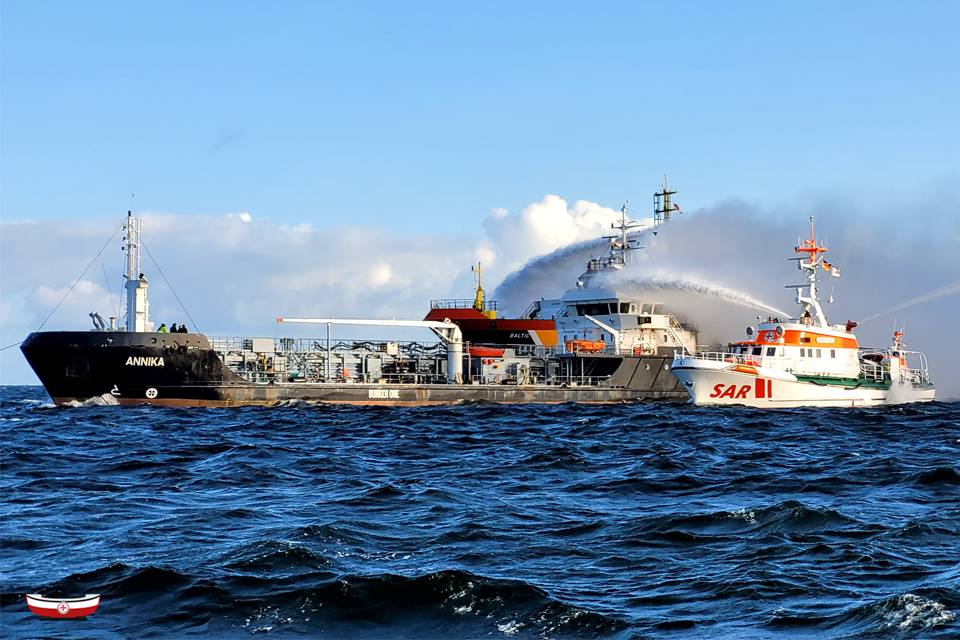Tanker Annika Catches Fire in Baltic Sea – Full Rescue Efforts Explained
On the morning of October 11, a 73-meter-long oil tanker named Annika caught fire while sailing in the Baltic Sea, just a few kilometers off the coast of Kühlungsborn, Germany. The tanker was carrying 640 tons of crude oil and had left Rostock, heading toward Travemünde, when flames suddenly erupted onboard.
Thick black smoke billowed from the ship, spreading across its upper sections, known as the superstructure. The situation was serious enough that the crew had to send out a distress call for emergency help.
Quick Rescue of Annika’s Crew
In response to the distress call, a rescue boat called Wilma Sikorski, from the German Maritime Search and Rescue Service (DGzRS), rushed to the scene. The rescue team arrived swiftly and saved all seven crew members onboard the Annika. Fortunately, no major injuries were reported, but some of the crew members had minor injuries and were sent to a nearby hospital for treatment.
Firefighting Efforts to Control the Blaze
Several other vessels joined the rescue and firefighting efforts. Among these were the DGzRS ship Arkona, the tug Baltic, and the fireboat Albert Wegener, along with police boats. These ships worked hard to bring the fire under control by spraying water onto the deck. Although they managed to stop the flames above deck, the fire below deck continued to burn.
Because the fire could not be fully put out at sea, two salvage tugboats towed the damaged tanker back to Rostock. Firefighters onshore then worked through the night and completely extinguished the blaze by the following day.
Indian Navy’s Mission Deployed Destroyer Provides Critical EOD & Medical Assistance
Investigation and Safety Measures
Authorities quickly sealed off the tanker to begin an investigation into how the fire started. Early reports suggested that the fire may have begun either in the paint room or the engine room. Thankfully, the cargo tanks carrying the crude oil were not affected, preventing any oil from leaking into the sea.
Divers were also sent to inspect the ship’s hull for any heat damage. As a precaution, an oil boom was placed around the vessel to stop any potential pollution. It was confirmed that the engine room suffered heavy damage, and the fire also destroyed the ship’s lifeboat.
Conclusion
Thanks to the fast response by rescue teams and firefighters, the crew was saved and a bigger environmental disaster was avoided. Although the tanker Annika is now heavily damaged, the oil cargo remains secure. Investigators will continue to look into the cause of the fire to help prevent similar incidents in the future.

